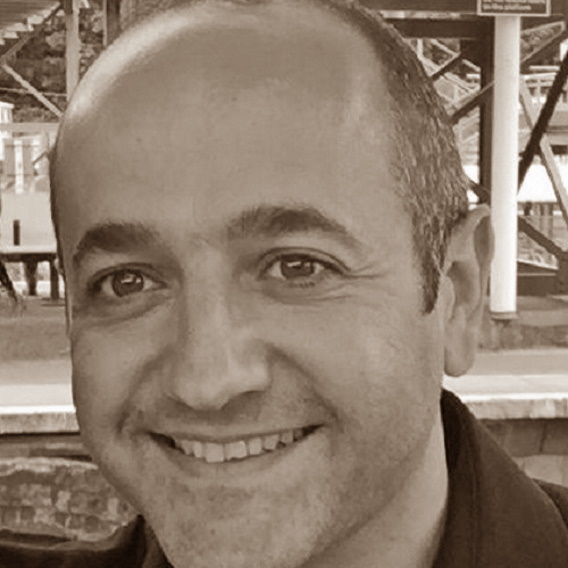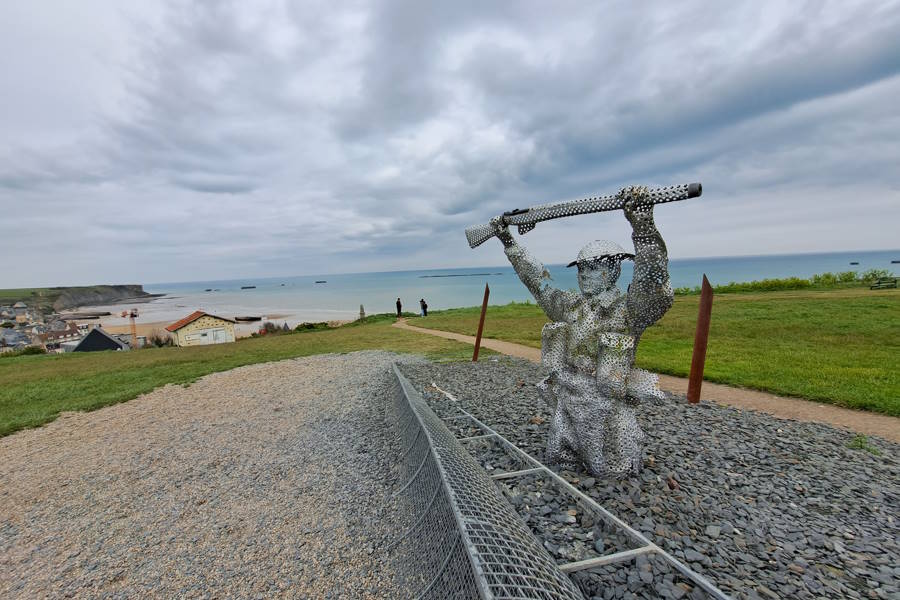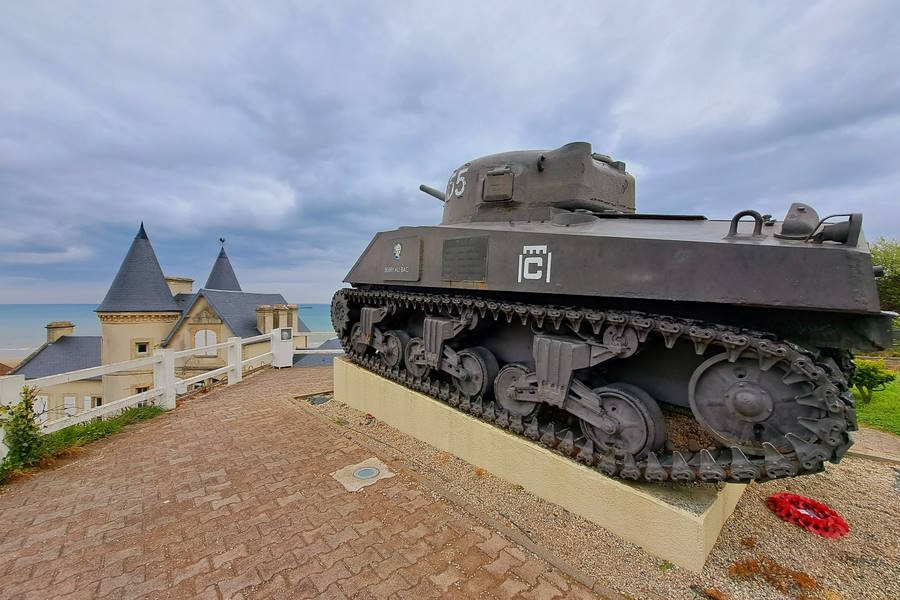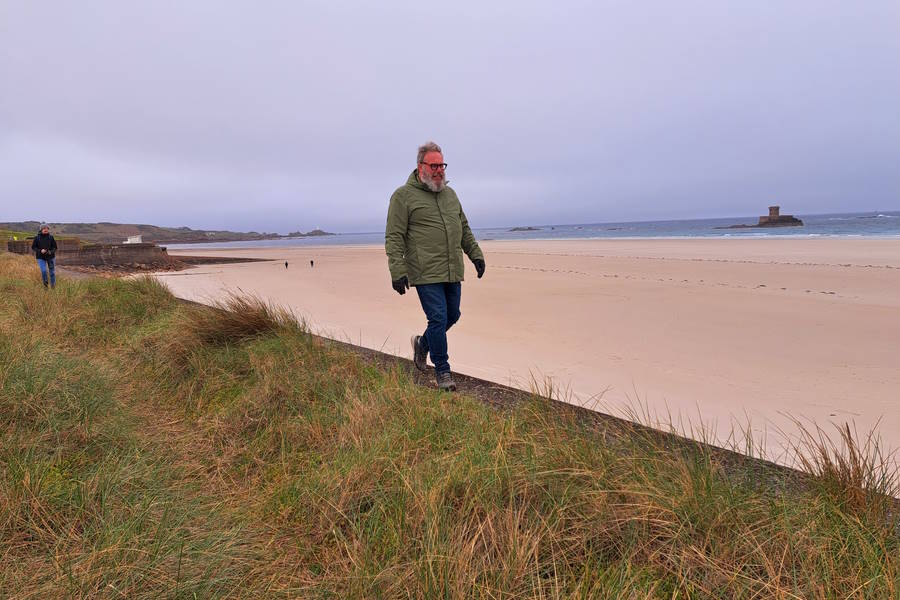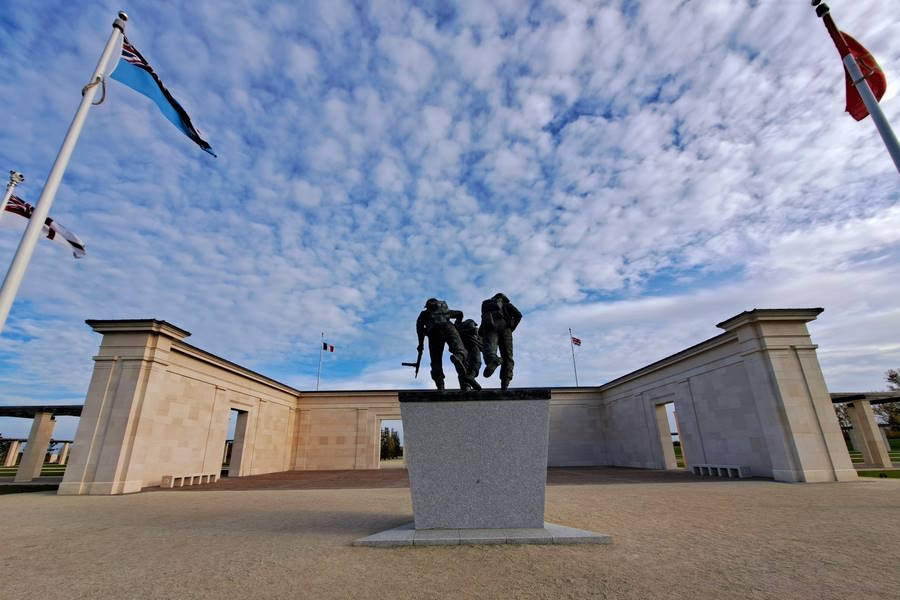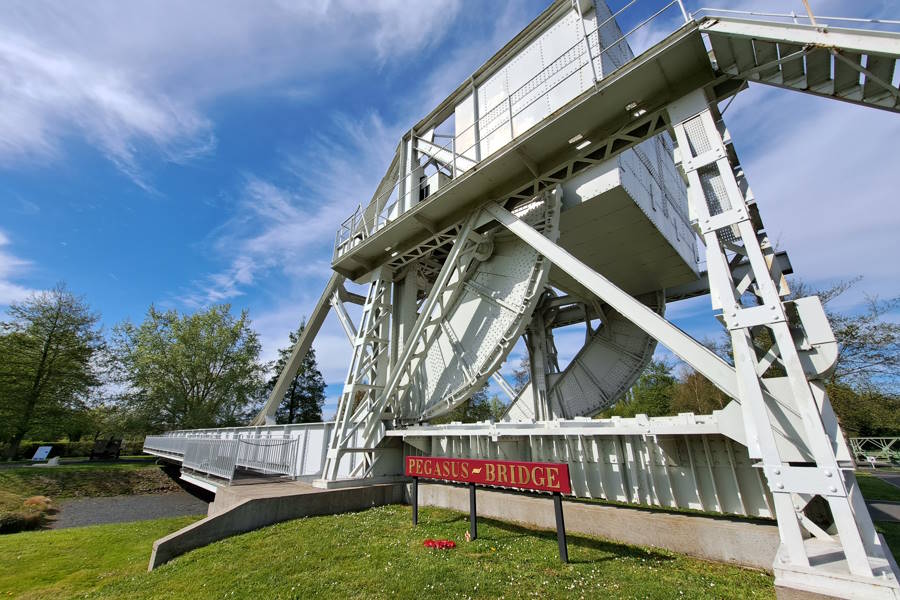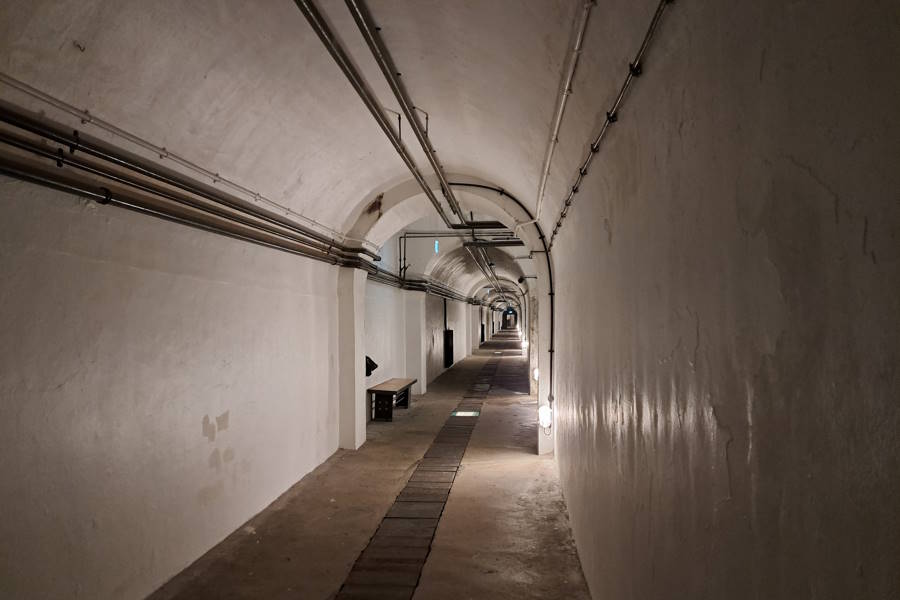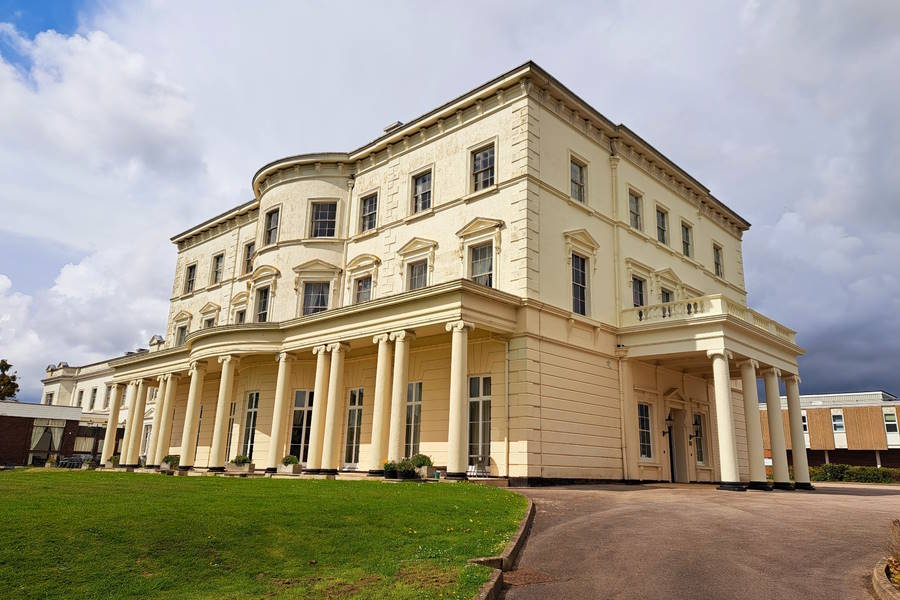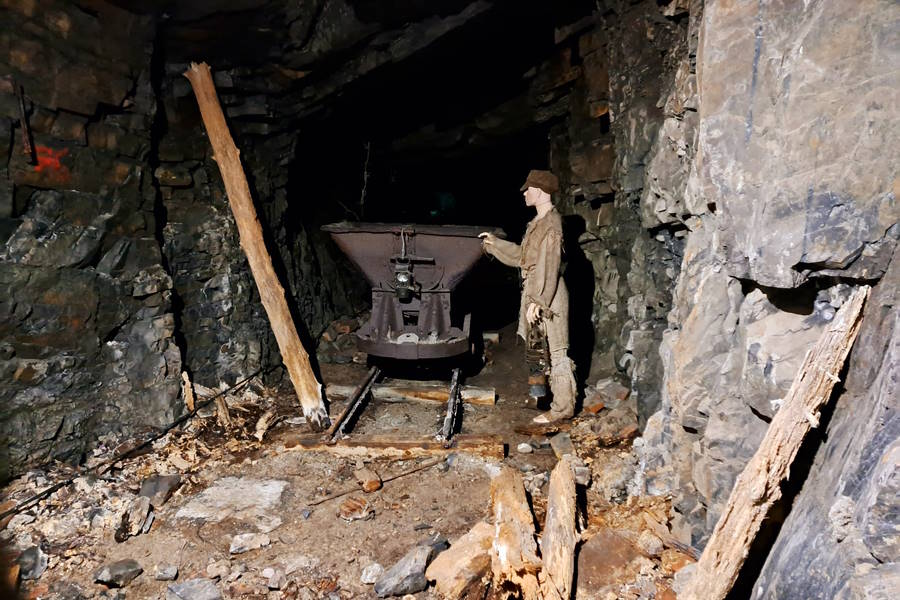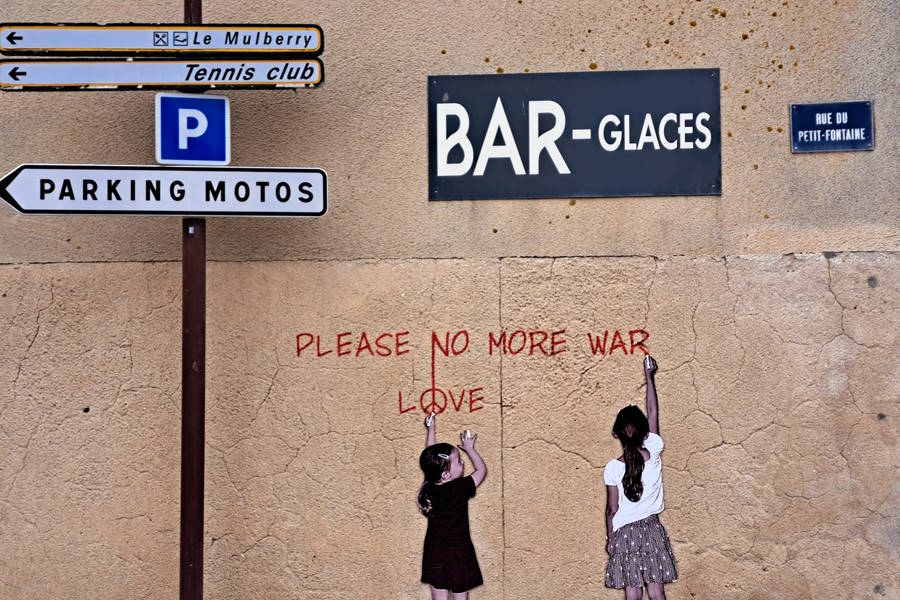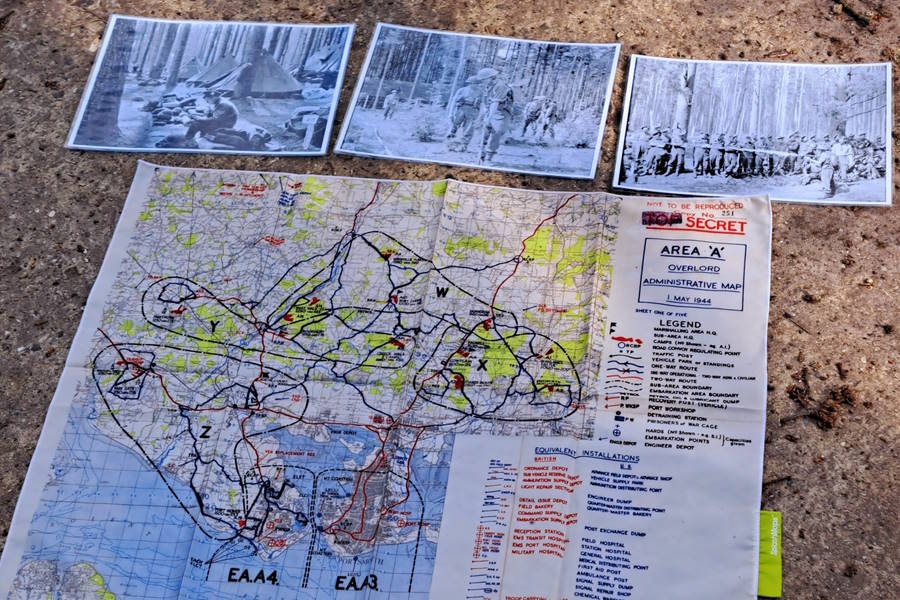Modern pilgrims can hike into WWII history
22/06/2023
# tags: Incentives , Events , Experiences
We have all heard of the hiking trails that converge on the Spanish city of Santiago de Compostela, with modern pilgrims following in the footsteps of ancient religious pilgrims.
Today, these well-trodden paths attract those seeking personal or group challenge incentives, to improve wellness both mental and physical, and to learn about the landscapes and cultures they pass.
Whilst, I have not had the chance to meander the 'Camino Way', I can now count myself as a 'modern pilgrim' of the Liberation Route Europe's (LRE) ever-growing portfolio of hiking trails, following in the wake of Allied Troops who liberated Europe from Occupation during WWII. The LRE hiking trails marry together remembrance, history and wellbeing. Next year marks the 80th anniversary of D-Day, so to experience a small portion of some 4000km of transnational trails, ahead of the commemorations, was a unique and valuable experience.
The current portfolio of hiking trails continues to grow, reflecting the long-lasting consequences and history of the war. Lacing-up hiking boots, I was able to delve into the planning & preparation of D-Day in Portsmouth & Hampshire, before tracking troop movements and ‘military action’ across the channel on the Normandy Beaches and completed my trek on the Channel Island of Jersey, one of the last territories to be liberated.
Most excitingly, I could use my smartphone to download the LRE App, providing me an immersive digital experience, as I began navigating museums, memorials, cemeteries, fortifications, historic places and many diverse landscapes on foot. LRE's trails may not converge at one central point, yet they form a traceable link between the regions, along which Allied Forces' advanced across Europe in WWII.
Portsmouth & Hampshire
Under Hampshire’s forested canopy of woodland, parkland, rural villages and hidden compounds, stretching along the south coast, the greatest amphibious assault on mainland Europe was being prepared, known to us by the names ‘Operation Overlord’ & ‘D-Day’.
Just 5-miles from the centre of Portsmouth, the quintessentially English village of Southwick, with its Golden Lion pub, parish church and half-timber cottages are all indelibly linked to D-Day. From April to June 1944, this was the ‘nerve centre’ of allied planning, strategy and operations. The Golden Lion, was the perfect start point from which to hike-out and explore the countryside’s closely held secret’s, such as the exact woodland locations’ where General Dwight D Eisenhower and General Bernard Montgomery camped. It seems quite amazing that two of the 20th centuries greatest military figures, sat in the bar, sipping ale and lemonade, whilst placing fingers across ordinance maps nearly 80-yers ago.
Current publican Greg Clarke, an expert himself on the pub’s unique place in history, stated “If only these walls could talk; I am so lucky to run the Golden Lion, I have met so many interesting characters, from Veterans to Ike’s (Eisenhower’s) grandson each with their own incredible stories”.
Following in Eisenhower’s footsteps, taking in Hampshire’s rolling landscapes of fields, pathways and forests, this short 5km trail circuited the Thistlethwayte family-owned estate, within which sits Southwick House, a grade II listed mansion coveting the oak-panelled ‘Map Room’; one entire wall is covered by the original wooden map that sets out ship and troop movements, which unfolded during Operation Overlord. The former Library room next door, showcases a plaque on the wall signifying its historic importance – “In this room on the fifth day of June 1944 General Dwight D Eisenhower made the historic decision to launch the assault against continental Europe on the 6th June, despite uncertain weather conditions”.
Nearby Southwick Village, ‘Creech Woods’ became one of many, martialling & assembly camps ahead of D-Day, some 3850 troops and 300 vehicles were camped in this particular woodland. Our guide, Ben Mayne, a military historian & Battlefield guide, laid on the forest floor his silk map; feeling like we were being briefed for our own military operation, he visualised the complexity of logistics and the exact point Montgomery stood on the bonnet of his jeep to address troops, before battle.
Our proceeding woodland hike uncovered decaying vestiges of the field kitchen. Mayne confirmed that this mass of men and machinery would be funnelled into Embarkation points, onto ships and landing crafts, introducing the next stage of our trail beside the coastline.
More than 800 landing craft were used in the Normandy Landings of 1944, out of these, just one exists today and forms part of ‘The D-Day Story’ museum on the water’s edge; Landing Craft Tank (LCT7074) sits outside the museum, having been salvaged from the bottom of a Liverpool harbour. Used as a former nightclub, the sympathetic renovation gives visitors a first-hand insight of standing on a landing craft next to one of ten tanks which would have squeezed onto such craft in 1944. At the heart of the D-Day story and for which the museum was built around, is the 83-meter long ‘Overlord Embroidery, charting those who took part and the Battle for Normandy.
Normandy & the D-Day landings
Leaving Portsmouth Harbour heading to Caen, we tracked the exact route the liberators took on the 6th June 1944, finally docking at the modern port of Ouistreham, to our right ‘Sword’ beach thronged with sporting activity. In 1944 troops disembarked into the sea struggling towards ‘Sword’ beach, under a barrage of bullets, shrapnel and mortar coming from heavily fortified German coastal defences.
We continued our Liberation Route hike, exploring a region criss-crossed by cycle paths and trails, which interweave the connected landing beaches of ‘Sword, Juno, Gold, Omaha and Utah’, evoking the most emotional stories, personalities and timelines of battle; our first mission was to reach Pegasus Bridge following the Orne Canal, just as the 6th Airborne division had done in their ‘Horsa Gliders’ during the very early hours of 6th June 1944, signalling the start of ‘Overlord’. We unravelled the audacious plans to capture the bridge, within the compact and artefact filled ‘Memorial Pegasus’ museum.
Later, hiking adjacent to the water’s edge along the peaceful stretches of beach, the gentile pace of life was in stark contrast to the scarred remains of the ‘Atlantic Wall’, the western bastion of fortress Europe. Beside the ‘Juno Beach Centre’ we entered a preserved German bunker & command post built in 1941-42. Lost to time and discovered below 20-tonnes of excavated sand, it forms a highlight of the museum; further on the French monument, ‘Croix de Lorraine’, stands proud, significant as the point at which General de Gaulle set foot on French soil on the 14th June 1944.
As we entered the landing zone of ‘Gold Beach’, our interactive map, highlighted the story of Company Sergeant Major Stanley Hollis, who won the only Victoria Cross to be awarded on 6th June, 1944. A short walk from Hollis’s gallantry at Mont Fleury, the British Normandy Memorial has etched the names of 22,442 servicemen and women from 38 different countries who died during the Battle of Normandy. Their inscriptions adorn the ‘memorial court’ and stone piers, which form the ‘Cloister Garden’ looking out towards ‘Gold’ beach for time immemorial.
We had now reached the outskirts of Arromanches, our hike climbing the steep ascent to reach the apex of the western cliffs above the town and were rewarded by a view over the town, the English Channel and the concrete carcasses of the ‘Mulberry Harbour’. The town is dominated by the newly refurbished ‘D-Day Museum’, which deserves time to explore, as it explains the logistical brilliance and story of the Mulberry harbour’s conception, building, installation and operation.
We departed Arromanches-Les-Bains, as dramatically as we entered, by taking a narrow footpath that weaves its way up above the Eastern chalk cliffs. The tall grass was growing over the precipice like giant eyelashes, blinking over the dramatic escarpment that looked seaward, as the remnants of the concrete breakwaters disappeared from our view. Now Bayeux, the medieval masterpiece, was in our sights, distantly appearing above the softly undulating fields of vibrantly yellow ‘Canola’ plants.
Bayeux is synonymous with the ‘Bayeux Tapestry’; this embroidery, on course linen, depicts the Conquest of England by the Normans. It provided the inspiration and link for Portsmouth’s ‘Overlord embroidery’ and as we were to find out later, another ‘Occupation’ embroidery found on the Channel Island of Jersey.
Maybe the most poignant part of our hike, was arriving at the Normandy American Cemetery; amongst pine trees, upon manicured lawns, the 'White Marble Latin Crosses' spread-out in uniform rows as far as the eye can see, marks 9,386 graves. The cemetery is situated on a bluff high above the coast, with dramatic views along the 10km stretch of Omaha Beach and from which German troops unleashed fire and fury upon landing troops, causing over 4,000 casualties, the bloodiest of all the landing zones. Our coastal walk, continued along this magnificently peaceful sandy stretch, with our guide mentioning that some US troops were blown off course and landed further along the beach to less well defended areas, once again the weather playing its part in D-Day.
Jersey
Within the foyer of the historic ‘Pomme d'Or’ Hotel, a grainy sepia photo proudly showcases the moment the Union flag was hoisted from the flagpole upon the hotel’s balcony on May 9th 1945, signifying the Liberation of Jersey. For five long years the Swastika had flown here; the Channel Islanders were the only part of the British Isles to be occupied by the Nazis, a period of extreme hardship and peril for the local population and those brought to Jersey against their will.
From the entrance of the ‘Pomme d'Or’ Hotel, one can walk across Liberation Square, passing Philip Jackson's ‘Monument to Freedom’ sculpture and onward to St Helier Harbour which was the focus of the Liberation of Jersey in May 1945. Various points of interest in this area testify to the heady events of those marvellous days, and these are featured on the first LRE themed trail entitled the ‘Liberation of Jersey’. A highlight is the Occupation Tapestry located at the Maritime Museum, which documents the civilian wartime experience over 13 intricate panels.
The second themed LRE trail, focuses upon the forced workers and slave labourers brought to the Island to construct the many concrete fortifications, entitled the ‘Forced Workers in Jersey’. Hence, Jersey includes some of the best preserved ‘Atlantic Wall’ defences in Europe, no better exemplified than by one of three main coastal artillery batteries, ‘Lothringen’; situated on the headland at Noirmont, overlooking St. Aubin’s Bay. Entering this multi-level concrete edifice, incorporating periscope and range finder, is to step back to 1944 when it became operational.
Our tour started at ‘La Hougue Bie’ in the parish of Grouville ; a site of immense importance for Jersey, well before the arrival of the German Forces, who made this Island high-point the location of a Battalion Command Bunker (Eastern Sector). Here remains a Neolithic passage grave, one of the ten oldest buildings in the world, with a medieval Christian chapel sitting upon the top of the Neolithic mound. During WWII, the German Forces built an observation tower beside the chapel, whilst the Command Bunker operated communications to the Eastern Sector strongpoints and battle HQ. Now the bunker serves as Memorial to the Forced Workers from all over Europe and those that helped them in spite of the inherent dangers, like Island resident Louisa Gould, who sheltered an escaped Russian slave worker. Her bravery led to her demise at Ravensbrück concentration camp. Louisa’s story has been immortalised in the 2017 film ‘Another Mother’s Son’.
The plight of the forced and slave workers is even more powerfully portrayed within the Jersey War Tunnels, a unique part of the hike. This is the Island’s most famous German structure, comprising of a 1000m complex of tunnels, dug over 50m underground by hundreds of labourers over a two-year period. This is the most emphatic example of the physical hardships labourers faced, by being forced to create a munitions store and latterly a military hospital to be used in the event of Allied invasion. Now, the Tunnels create the backdrop to the whole story of the Occupation, shining a light on everything from passive resistance, escape, rationing to hardships of daily life and final freedom.
Maybe more than any other location on Jersey, the iconic La Corbière Lighthouse and St Ouen’s Bay encapsulate the sheer beauty of Jersey’s unique landscape; in the Parish of St. Ouen and across the 4km of spectacular arching golden sand, protected at each end by rocky shoulders, remembrance, nature, history and wellness marry together. Characteristics that are at the heart of the LRE concept. From a promontory, the vast expanse is marked by dog walkers silhouetted like Lowry-stick figures painted into the scenery, as is the 18th century La Rocco Tower, standing sentinel on a rocky tidal shelf half a mile off shore. Today the beach is still protected by a German anti-tank wall, with concrete bunkers placed at intervals along its length, their angular forms now softened by grass. At the bay’s northern most point, yet another bunker has become a renowned beachside seafood outlet run by Faulkner Fisheries.
Just around the headland’s south-western corner, La Corbière Lighthouse is overlooked by a German World War II observation tower, now functioning as a Jersey Heritage holiday accommodation let. This is one of many ingenious ways, alongside the tide of time and nature, these often ugly fortifications have been enveloped and incorporated into the environment. Jersey is aspiring to become an UNESCO Global Geopark, and such examples of the fusion between the geology and history of the Island will surely set it on its way to become exactly that.
The sacrifice and legacy of the Allied armies was to allow the freedom for our generation to hike, stroll, run and cycle through such an enchanting, democratic and liberated region. Our only job is to step forth and remember them!
Ramy Salameh travelled on behalf of www.liberationrouteeurope.com
